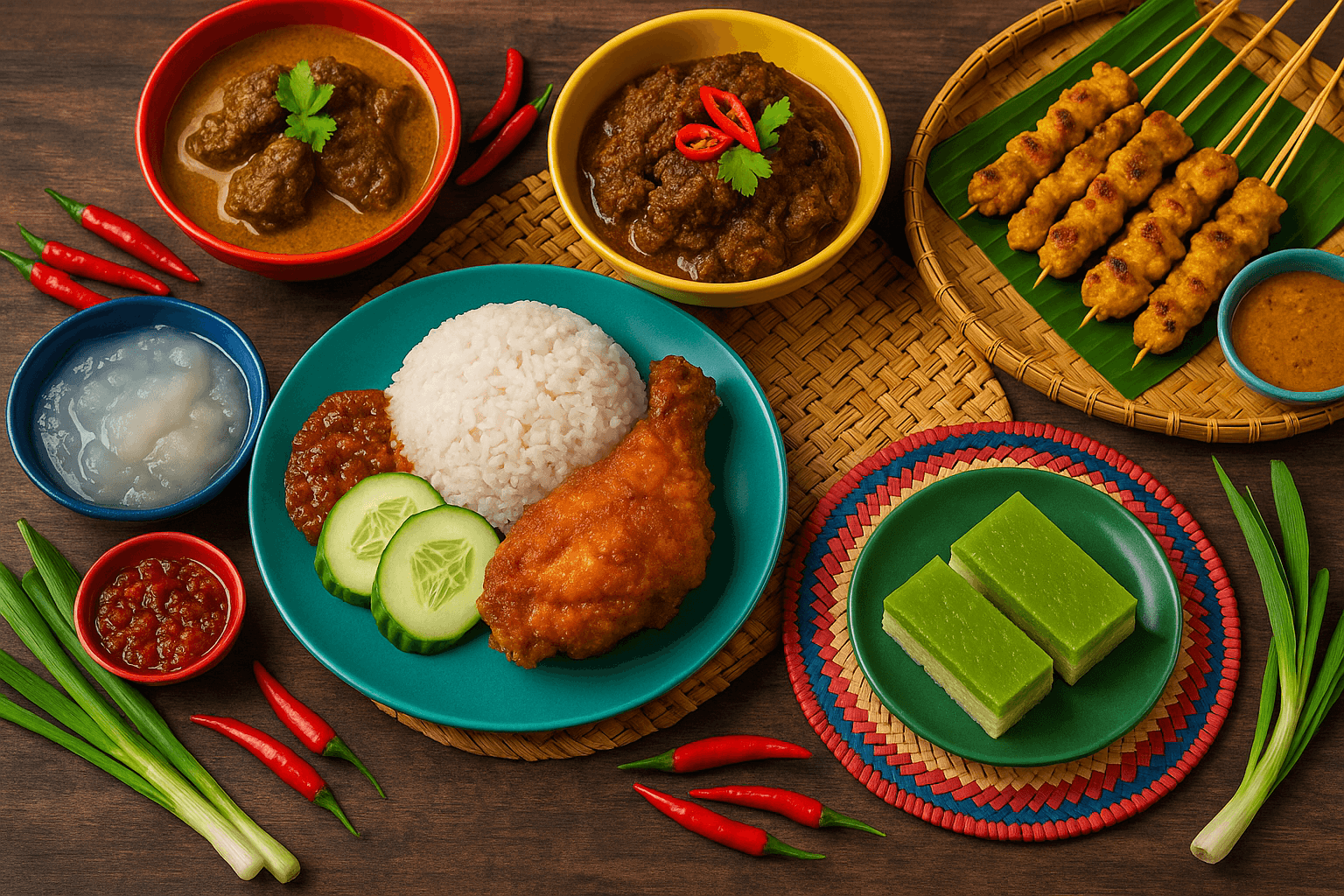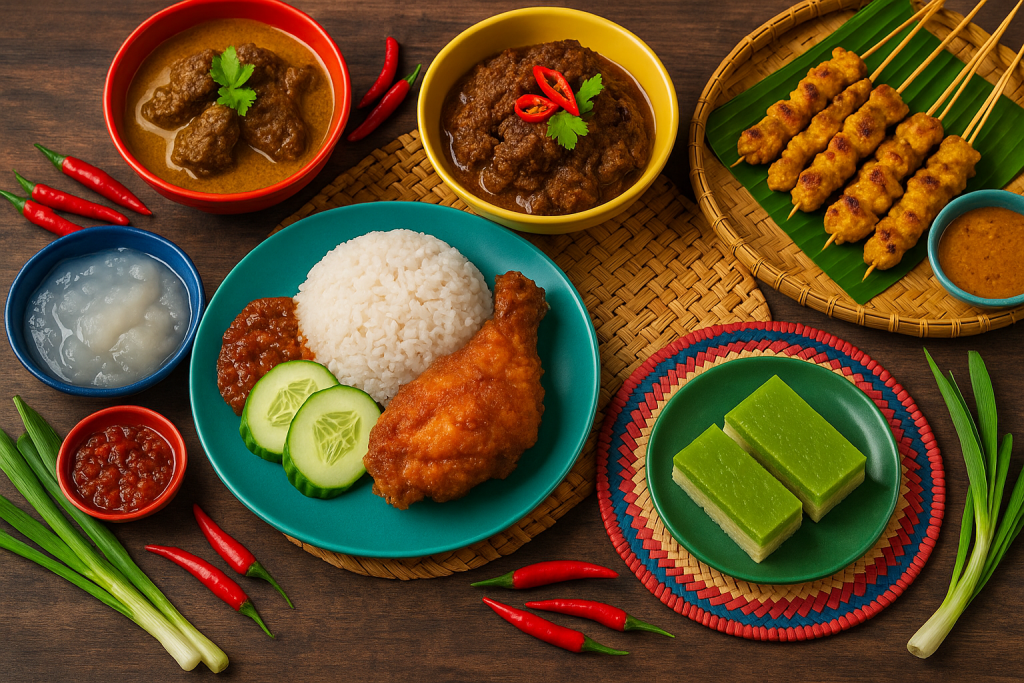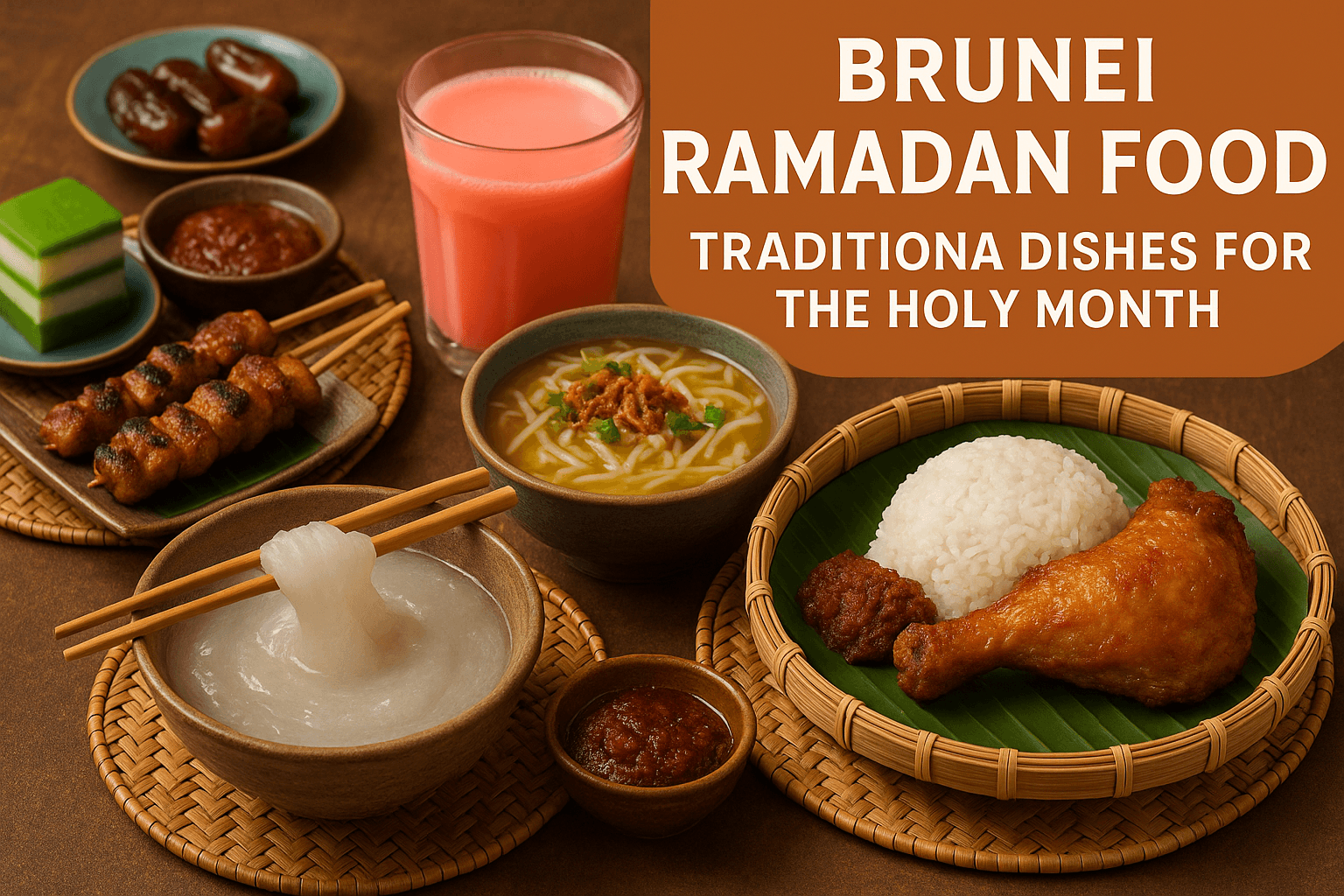Food is never just about sustenance. In every nation, cuisine reflects tradition, identity, and cultural pride. This is particularly true in Brunei, where Malay Cuisine in Brunei: A Cultural and Culinary Connection forms a vital bridge between heritage and modern life. Brunei’s Malay food culture is rooted in centuries of tradition, shaped by geography, religion, and the shared history of Southeast Asia. Dishes are infused with flavors that combine the richness of coconut, the fragrance of lemongrass, and the spiciness of chilies, creating a culinary experience that is both familiar and distinctive.
To understand Brunei fully, one must explore its food. The culinary identity of Brunei reflects the kingdom’s deep Malay roots, its Islamic identity, and the close ties with neighboring Malaysia and Indonesia. The result is a vibrant food culture that brings families, communities, and visitors together around tables filled with traditional dishes, festive meals, and daily favorites.
This article provides a deep exploration of Malay Cuisine in Brunei: A Cultural and Culinary Connection, highlighting its heritage, signature dishes, cooking methods, and cultural significance.

The Roots of Malay Cuisine in Brunei
Geography and Influence
Brunei’s location on the northern coast of Borneo positions it within a melting pot of cultures. The abundance of rainforests, rivers, and coastal waters supplies the ingredients that shape Malay Cuisine in Brunei: A Cultural and Culinary Connection. Coconut palms, rice paddies, seafood, and spices are the foundation of most meals.
Malay cuisine here is influenced by trade and cultural exchange. Arab traders introduced spices, while neighboring Malaysia and Indonesia share a common culinary heritage. Indian and Chinese migrants added layers of flavor, yet Malay cooking retains its distinctive Bruneian essence through local adaptations.
Religion and Tradition
Islam plays a central role in shaping the dietary laws and practices in Brunei. All food follows halal preparation, ensuring cleanliness and ritual compliance. Festive periods such as Ramadan bring forth communal meals where Malay Cuisine in Brunei: A Cultural and Culinary Connection is showcased in its most vibrant form, uniting families and communities.
Characteristics of Malay Cuisine in Brunei
Flavor Profile
The flavors of Malay Cuisine in Brunei: A Cultural and Culinary Connection are bold, aromatic, and deeply satisfying. Coconut milk provides richness, turmeric and ginger create warmth, while chilies and sambal bring heat. Lemongrass, pandan, and kaffir lime leaves add fragrance, while palm sugar and tamarind balance sweetness and sourness.
Cooking Methods
Cooking in Brunei relies on time-honored techniques such as grilling, steaming, stir-frying, and slow simmering. Banana leaves are often used for wrapping, infusing food with a subtle aroma. Traditional clay pots preserve moisture and flavor.
Core Ingredients
Rice: The centerpiece of every meal.
Seafood: Fish, prawns, and squid from the South China Sea.
Coconut: Milk, grated flesh, and oil enrich countless dishes.
Spices and herbs: Turmeric, lemongrass, coriander, and galangal.
Local vegetables: Long beans, eggplant, tapioca leaves.
Signature Dishes of Malay Cuisine in Brunei
Nasi Katok
Perhaps the most iconic dish, Nasi Katok represents the simplicity and accessibility of Malay Cuisine in Brunei: A Cultural and Culinary Connection. It combines rice, fried chicken, and sambal into a meal loved by locals across all generations.
Ambuyat
Known as Brunei’s national dish, Ambuyat is a starchy creation made from sago. It is eaten with bamboo sticks and dipped into flavorful sauces. Ambuyat is more than food; it is a cultural ritual symbolizing togetherness.
Rendang
Originating from neighboring regions but deeply embraced in Brunei, Rendang is slow-cooked beef in coconut milk and spices. The dish represents patience, skill, and celebration.
Satay
Grilled skewers of marinated meat, served with peanut sauce, are a staple in both street markets and festive gatherings. Satay embodies the communal aspect of dining in Malay Bruneian culture.
Kuih and Desserts
Colorful rice cakes and sweet treats such as kuih lapis and seri muka are enjoyed during festivities. These delicacies reflect the artistry and joy of Malay Cuisine in Brunei: A Cultural and Culinary Connection.
Festivals and Food in Brunei
Food plays a central role in religious and cultural celebrations. During Ramadan, night markets showcase a variety of traditional dishes. Hari Raya Aidilfitri features abundant meals, where families serve rendang, ketupat, and desserts to guests. Weddings, communal feasts, and village gatherings always highlight Malay Cuisine in Brunei: A Cultural and Culinary Connection as an expression of hospitality and unity.
The Social Meaning of Food
In Brunei, food is a language of respect, love, and belonging. Sharing a meal symbolizes trust and community. Offering traditional dishes to guests is a gesture of welcome, while eating together reinforces kinship ties. The essence of Malay Cuisine in Brunei: A Cultural and Culinary Connection is its ability to connect people emotionally and spiritually.
Evolution and Modern Influence
While tradition is strong, Malay cuisine in Brunei also evolves. Modern restaurants reinterpret classics with innovative techniques. Younger generations experiment with fusion flavors, combining global tastes with Bruneian identity. Yet, authenticity remains prized. The enduring appeal of Malay Cuisine in Brunei: A Cultural and Culinary Connection is that it adapts without losing its heritage.
Culinary Tourism and Global Recognition
Brunei’s growing reputation as a destination for culinary tourism highlights the international appreciation of its food. Visitors are drawn to taste Ambuyat, Nasi Katok, and vibrant kuih selections. Cooking classes, food festivals, and cultural exhibitions showcase Malay Cuisine in Brunei: A Cultural and Culinary Connection to global audiences.
Preservation of Heritage
The government and cultural organizations actively promote traditional cooking. Community programs teach younger generations recipes and preparation techniques. By safeguarding heritage, Brunei ensures that Malay Cuisine in Brunei: A Cultural and Culinary Connection remains alive for future generations.
Conclusion
Malay Cuisine in Brunei: A Cultural and Culinary Connection is more than the sum of its dishes. It is a reflection of history, identity, faith, and hospitality. Through rice, coconut, spices, and shared meals, Brunei tells the story of its people. Every bite carries meaning, every dish binds communities together.
Exploring Malay cuisine in Brunei is exploring the essence of the nation itself—a living cultural connection expressed through food.


